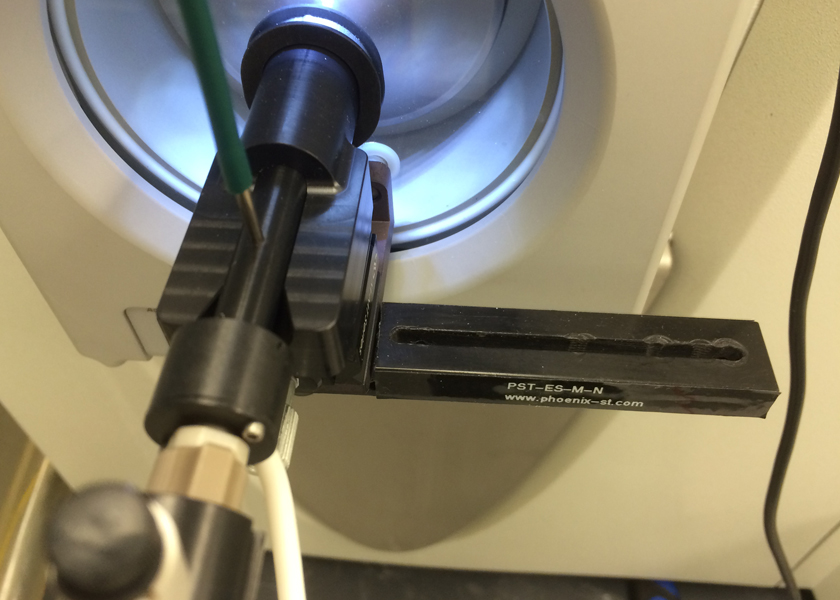PST-seTip, a stubby, mechanically robust fused silica emitter is clog-resistant and durable for this higher-flow regime and produces nanospray-like sensitivity.
Microspray sources that are plug-and-play are available for the Thermo Easyspray (PST-ES-M-N) or Nanoflex (PST-CH-M-N) sources. Customers can add microspray capabilities with minimal investment in money and effort.
It has been widely believed that nanospray alone can provide high enough sensitivity for the protein/peptide samples. However by increasing the flowrates to under 10 uL/min, the van Deemter plot would suggest that the plate height (approximately equivalent to the peak width) would decrease when compared to that in the nanoflow regime. The “dead-volume” of even a a 50 um i.d. emitter when the flow is 5-10 uL/min is negligible to cause any noticeable effect on the peak width and sensitivity. The key to achieving high sensitivity in microflow range is a robust, non-clogging emitter capable of cone-jet mode sprays. Our PST-seTip fits the bill.

